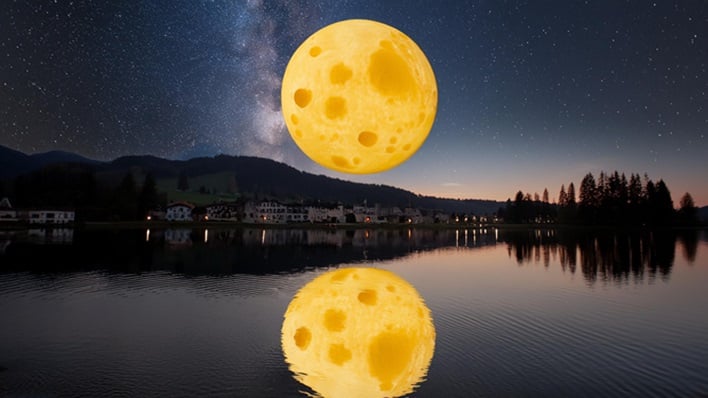Scientists Finally Confirm What’s Inside The Moon And It’s Not Cheese

Scientists believe they have settled the debate of what is at the core of Earth’s Moon. No, it is not made of cheese, but there has been a scientific debate going on whether the Moon’s core was solid or molten. Determining which hypothesis is correct could help scientists and astronomers come to a more accurate conclusion of the Moon’s beginnings, and even perhaps that of the solar system itself.
The group combined geophysical and geodesic constraints from Monte Carlo exploration and thermodynamical simulations for different Moon internal structures. This indicated that only models with a low viscosity zone enriched in ilmenite and an inner core present densities deduced from thermodynamic constraints compatible with densities deduced from tidal deformations. After sifting through all the results, the team concluded that the most likely scenario was that of the lunar mantle overturn scenario.

The team wrote, “Our results question the evolution of the Moon magnetic field thanks to its demonstration of the existence of the inner core and support a global mantle overturn scenario that brings substantial insights on the timeline of the lunar bombardment in the first billion years of the solar system.”
In order to collect the data needed, the group sought previous data from past space missions, lunar laser ranging experiments in order to complete a profile of various lunar characteristics. They then performed modeling with various core types to find the closest match with the observational data.
What the team found was that denser material inside the Moon falls toward the center, while less dense material rises toward the lunar surface. They also concluded that the lunar core is similar to Earth’s, with an outer fluid layer and a solid inner core.
The research team will not have to wait for long to try and confirm their results concerning the Moon's core, as NASA is planning on placing human boots back on the surface of the Moon sometime this decade. Once there, astronauts can set up the necessary equipment to determine whether the team got it right, or not. So, while the sliver of hope may be much thinner now, there is still an itsy bit of hope for the cheese camp of thought!

